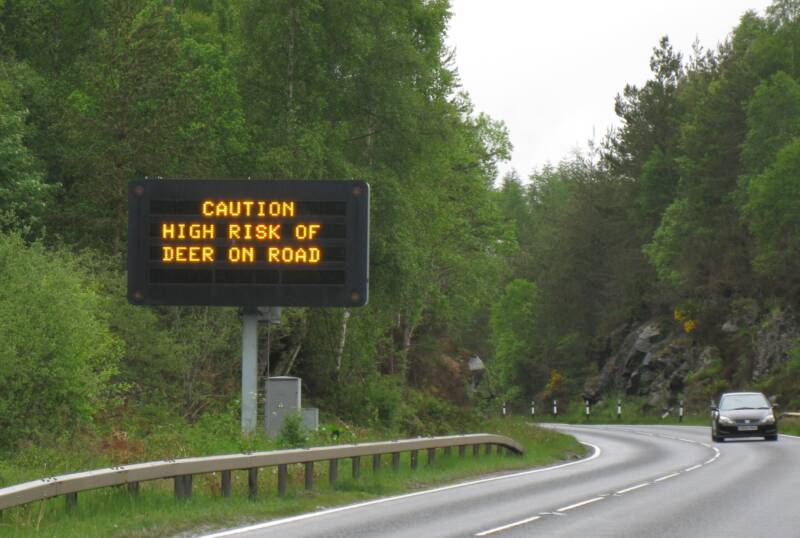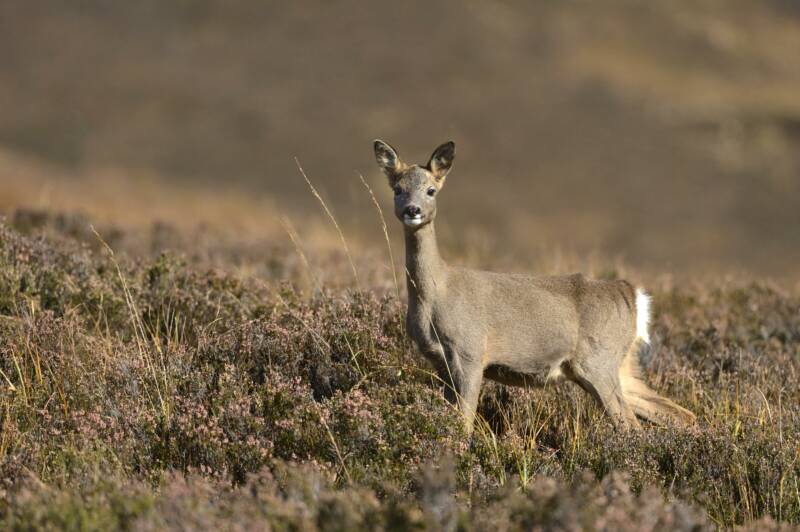A campaign has been launched warning drivers to look out for deer along Scotland’s trunk road network.

NatureScot is working with Transport Scotland and Traffic Scotland to display warning messages on electronic variable message signs (VMS) in the areas of the highest risk between May 24 and June 14.
In recent decades, deer populations in Scotland have both increased in number and spread in range, particularly in urban areas and the central belt.
Alongside growth in road traffic this has inevitably led to an increased risk of collisions between deer and vehicles, with almost 24,000 recorded since 2003.
May and June are the peak months for collisions as young roe deer disperse to look for their own territories, with dusk the period of highest risk. There is also an increased risk of collision with red and roe deer in the Highlands with both traffic and deer numbers on the rise.

Warning messages will be displayed near the main risk areas in the central belt and also other locations across the country where collisions are a concern, including around Perth, Aberdeen and Inverness.
Dominic Sargent, NatureScot Deer Policy Officer, said: “Public safety is a really important part of our wider work with partners to reduce deer impacts across Scotland, particularly in the areas where we know those impacts are highest.
“On the road network, the key collision locations appear to be mainly around junctions that have small areas of woodland nearby. We think that a combination of deer using the woodland as daytime refuges, a lack of continuous traffic on slip roads and reduced visibility on curved slip roads could be factors at play.
“As we enter the peak period for collisions, this campaign will remind drivers always to be ‘deer aware’, slow down and stay alert to help reduce the likelihood of collisions.”
NatureScot has issued the following tips for drivers on avoiding deer accidents:
- Particularly in peak times, slow down and watch for deer crossing roads. Be aware that if you’re driving near woods, deer can suddenly appear before you have time to brake.
- Try not to suddenly swerve to avoid hitting a deer. A collision into oncoming traffic could be even worse.
- Only brake sharply and stop if there is no danger of being hit by following traffic. Try to come to a stop as far away from the animals as possible to allow them to leave the roadside without panic, and use your hazard warning lights.
- After dark, use full-beams when there is no oncoming traffic, as this will illuminate the eyes of deer on or near a roadway and give you more time to react. But dim your headlights when you see a deer or other animal on the road so you don’t startle it.
- Report any deer-vehicle collisions to the police, who will contact the local person who can best help with an injured deer at the roadside. Even if you’re uninjured and your car isn’t damaged, the deer may be fatally injured and suffering. Do not approach an injured deer yourself – it may be dangerous.
